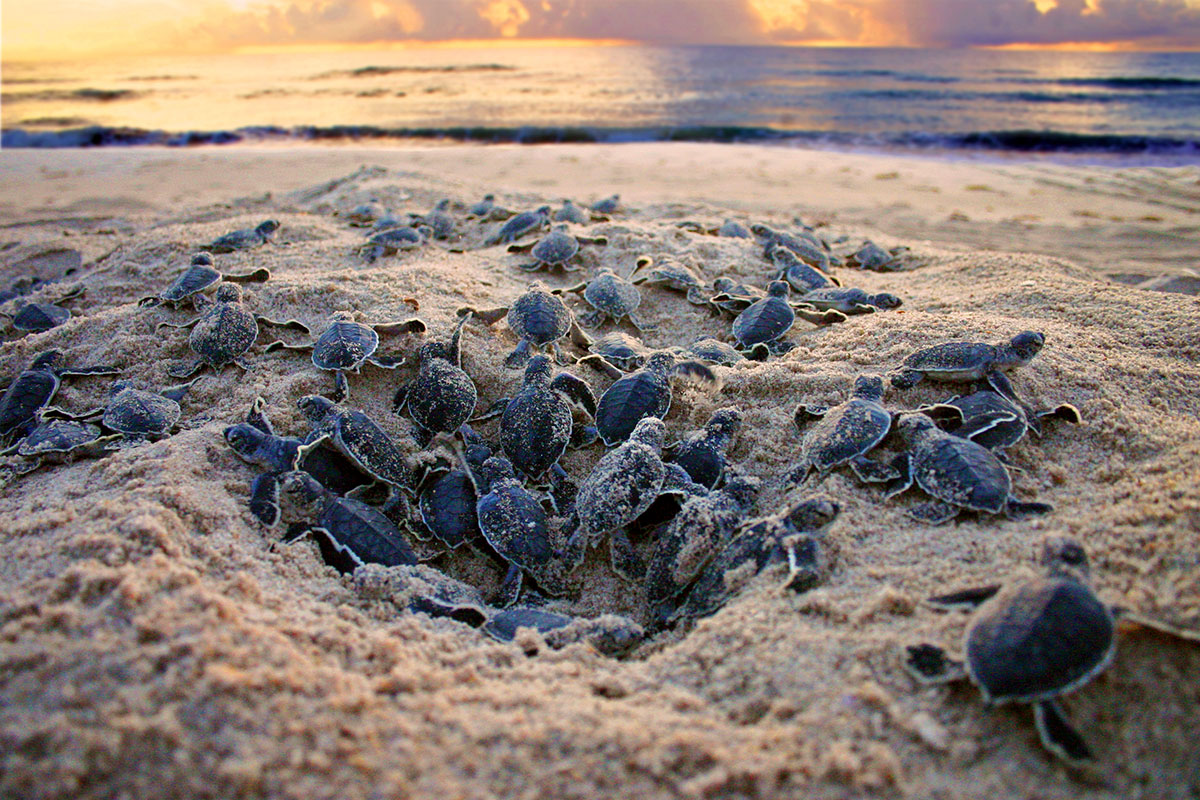The captivating beauty of Florida’s beaches draws not only tourists and sunseekers but also plays a crucial role in the lives of marine creatures, particularly sea turtles. These gentle giants of the ocean venture ashore to lay their nests under the moonlit skies, an awe-inspiring spectacle that reminds us of the delicate balance between nature and development. As our coastal communities grow, so does the need to harmonize modern living with the protection of these ancient creatures. This is where sea turtle conservation regulations, including those pertaining to window films, come into play.
A Glance at the Issue
Beachfront communities along Florida’s coastline have become synonymous with luxury living and breathtaking ocean views. However, the increasing urbanization and the use of artificial lighting pose significant challenges to the nesting habits of sea turtles. These majestic creatures, instinctively drawn to the light of the horizon reflected on the water, often become disoriented due to the competing glow of streetlights, homes, and businesses.
To mitigate this disruption and ensure the survival of sea turtles, Florida has implemented a range of regulations aimed at minimizing the impact of artificial light pollution. For properties with a direct “line of sight” to the beach, one such regulation concerns the installation of windows with a visible light transmission (VLT) of 45% or less.
Window Films: A Solution for Both Turtles and Residents
Enter the realm of window films – a solution that beautifully aligns conservation efforts with the needs of homeowners. These films, designed to limit the amount of visible light passing through glass, have emerged as a key player in ensuring that the allure of coastal living doesn’t come at the cost of these marine marvels.
By adhering to the VLT requirement, window films help in multiple ways:
- Reduced Light Pollution: Window films ensure that artificial light emanating from homes remains within permissible limits, preventing the disorientation of nesting sea turtles and newly hatched hatchlings.
- Energy Efficiency: Alongside their ecological benefits, window films contribute to energy efficiency by reducing heat and glare, translating into lower cooling costs for homeowners.
- UV Protection: Sea turtle-friendly window films also safeguard interiors from harmful ultraviolet (UV) radiation, prolonging the lifespan of furniture, artworks, and flooring.
- Customization and Aesthetics: Window films aren’t just functional; they offer an array of styles and designs, enhancing the aesthetic appeal of homes while complying with conservation regulations.
Compliance and Beyond
Understanding the specifics of the regulations and guidelines, such as the Florida Model Lighting Ordinance for Marine Turtle Protection, is crucial for both homeowners and property developers. Compliance demonstrates a commitment to preserving the natural heritage of our coasts, while also fostering a sense of responsibility towards the environment.
But the significance of sea turtle-friendly window films goes beyond compliance. They exemplify how innovation can coexist harmoniously with nature, proving that safeguarding fragile ecosystems doesn’t necessitate compromising on modern comforts.
As Florida’s coastal communities continue to flourish, the importance of sea turtle conservation regulations becomes ever more apparent. Window films stand as a testament to our ability to create a thriving environment where both human residents and these magnificent creatures can thrive side by side. By embracing these regulations and supporting the use of responsible window films, we contribute to the preservation of one of nature’s most enchanting spectacles – the ancient ritual of sea turtle nesting on our shores.


